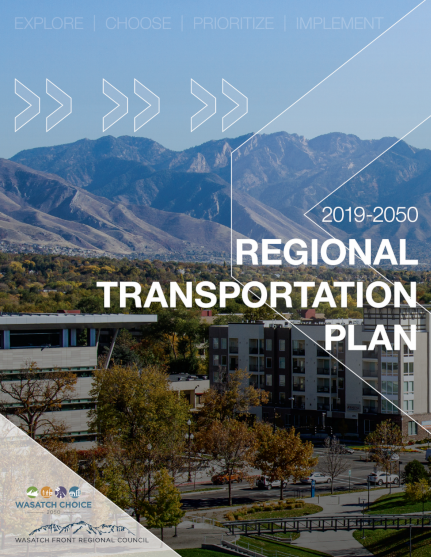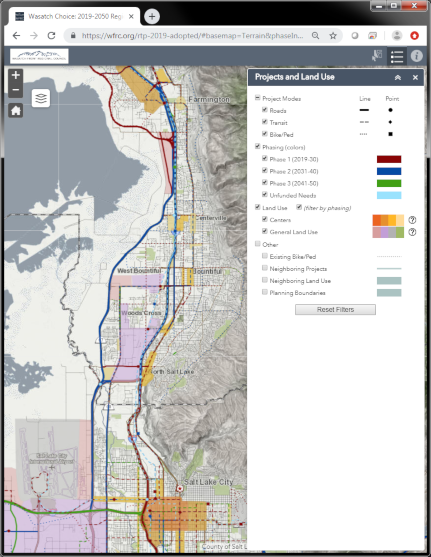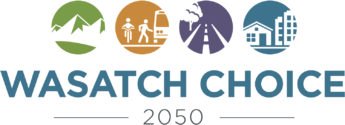
The Regional Transportation Plan (RTP) is where our Region’s future transportation system is born. The 2019-2050 RTP is a long-range blueprint that sets forth the 31-year strategy for regional transportation investments for all modes of transportation.
The 2019-2050 RTP is the transportation element of the Wasatch Choice Regional Vision, our Region’s shared blueprint for regional transportation, local land use, and economic development.
WFRC developed the 2019-2050 RTP over a four-year period in partnership with local governments, transportation agencies, community organizations, local stakeholders, and residents. The 2019-2050 RTP is informed by technical modeling and forecasting to help us understand how the Plan might help us collectively achieve regional quality of life goals. This planning process is coordinated with statewide transportation partners to develop common goals, planning time horizons, performance measures, and financial assumptions, which collectively form Utah’s Unified Transportation Plan.
Updated every four years, the 2019-2050 RTP lives within an anticipated budget. Against these constraints, particular transportation projects are prioritized, so we build the most important projects first. The 2019-2050 RTP prioritizes $50.4 billion in transportation spending between now and 2050, in order to keep our existing roadway and transit system in a state of good repair, and to construct and operate new roadways, transit services, and active transportation facilities.
The financially constrained RTP prioritizes 384 needed roadway projects that span 880 miles. Total roadway costs: $15.7 B
There are 82 prioritized transit projects in the financially constrained 2019-2050 RTP, which adds to or enhances 595 miles in the transit network. Total transit costs: $5.3 B
633 active transportation projects totaling 1,002 miles are added to the network through implementation of the RTP. Total active transportation costs: $461 M
The RTP also considers transportation technologies that will continue to influence the ways in which we get around now and in the future, such as connected and autonomous vehicles and mobility sharing services.
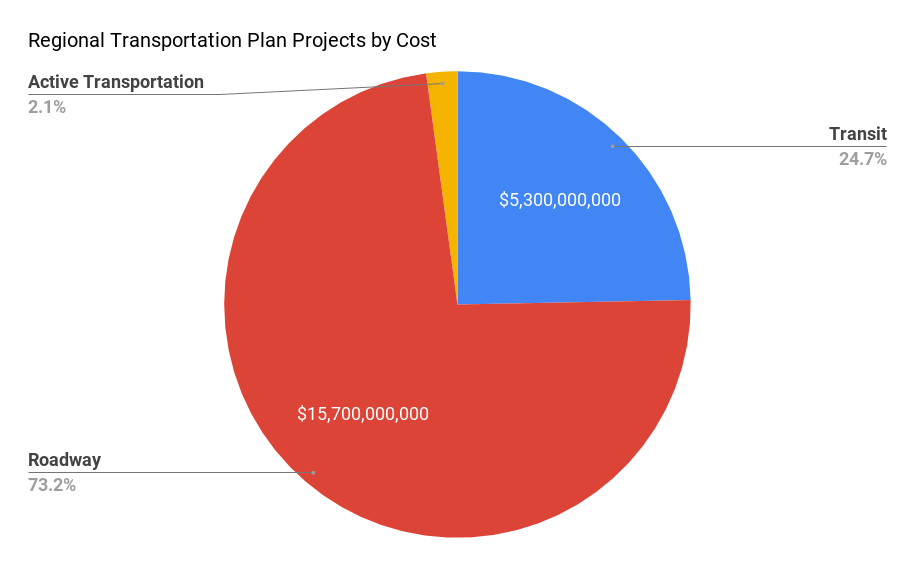
There are always more needed projects than anticipated revenues can fund. Therefore, some projects were moved to future phases or placed into the “unfunded” category. The figure below shows the needs and available revenue by phase for road and transit projects.
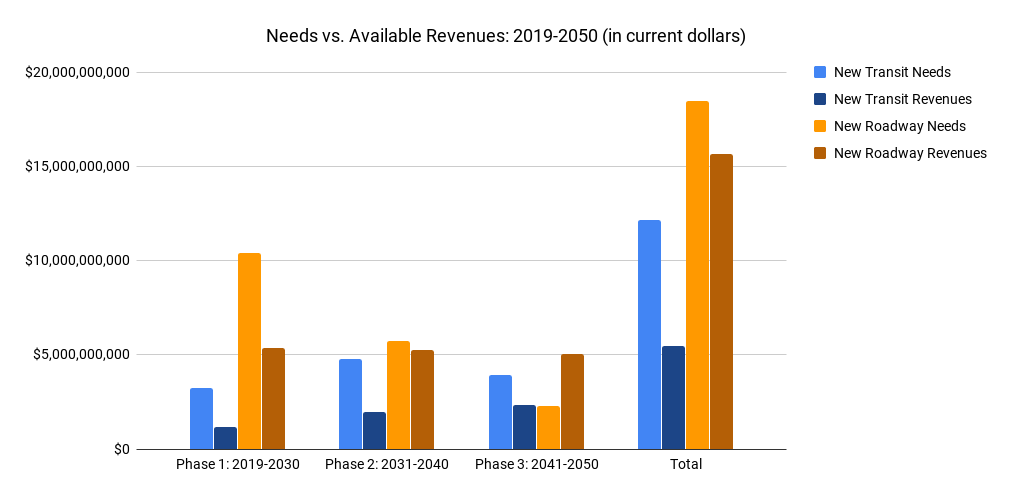
Utah is experiencing rapid growth. This amplifies the weight of the decisions we make now and over the next few decades. Growth compounds issues like air quality concerns, and mounting cost of living pressures. These issues are in turn affected by growth patterns and how people and goods are transported that are addressed by the RTP.
The RTP considers how transportation infrastructure can work with both land and economic development decisions to maximize overall quality of life. Wasatch Choice 2050 identifies transportation projects and investments, the use of land near those investments, and associated economic development strategies to achieve desired outcomes for local communities and the Region as a whole. Wasatch Choice 2050 also provides recommendations and resources to help stakeholders achieve those outcomes.
The Wasatch Choice 2050 Vision is built upon four key strategies.
- Provide transportation choices: offering better access to transit, trails, on-street bicycle facilities, and safe and connected sidewalks.
- Support housing options: responding to market demands and meeting the needs of a variety of household sizes, types, and budgets.
- Preserve open space: providing unparalleled access to the outdoors, which is key to our quality of life and our state’s competitive advantage.
- Link economic development with transportation and housing decisions: thinking about the interplay between them and, ultimately, the outcomes we want to achieve.
For additional information regarding the RTP, please contact Jory Johner.

